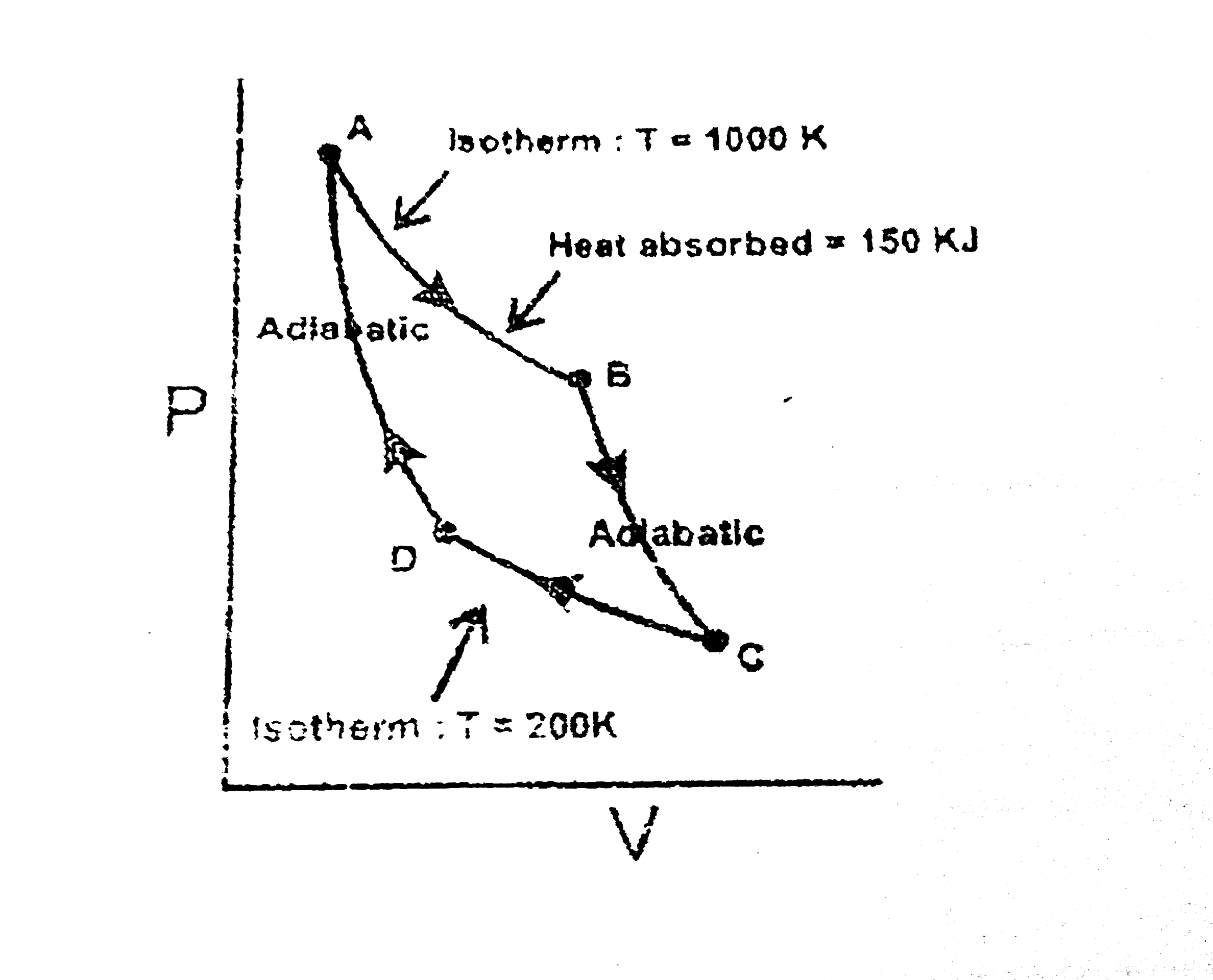What is Gibbs free energy change? Discuss its physical significance.
Step-by-Step Solution
1. Definition of Gibbs Free Energy Change (ΔG):
- Gibbs free energy change, denoted as ΔG, is a thermodynamic potential that measures the maximum reversible work obtainable from a thermodynamic system at constant temperature and pressure. It is defined as:
ΔG=ΔH−TΔS
where ΔH is the change in enthalpy, T is the absolute temperature in Kelvin, and ΔS is the change in entropy.
2. Spontaneity of Reactions:
- The sign of ΔG indicates the spontaneity of a reaction:
- If ΔG < 0: The reaction is spontaneous in the forward direction (A → B).
- If ΔG > 0: The reaction is non-spontaneous in the forward direction and spontaneous in the reverse direction (B → A).
- If ΔG = 0: The system is at equilibrium, meaning there is no net change in the concentrations of reactants and products.
3. Physical Significance:
- The Gibbs free energy change provides insight into the feasibility of a reaction. It helps predict whether a reaction can occur under specified conditions (constant temperature and pressure).
- A negative ΔG indicates that the process can perform work and is energetically favorable, while a positive ΔG suggests that energy input is required for the reaction to proceed.
4. Applications:
- Gibbs free energy is crucial in various fields, including chemistry, biology, and engineering, as it helps in understanding reaction mechanisms, predicting product formation, and designing chemical processes.
- Gibbs free energy change, denoted as ΔG, is a thermodynamic potential that measures the maximum reversible work obtainable from a thermodynamic system at constant temperature and pressure. It is defined as:
ΔG=ΔH−TΔS
where ΔH is the change in enthalpy, T is the absolute temperature in Kelvin, and ΔS is the change in entropy.
- The sign of ΔG indicates the spontaneity of a reaction:
- If ΔG < 0: The reaction is spontaneous in the forward direction (A → B).
- If ΔG > 0: The reaction is non-spontaneous in the forward direction and spontaneous in the reverse direction (B → A).
- If ΔG = 0: The system is at equilibrium, meaning there is no net change in the concentrations of reactants and products.
- The Gibbs free energy change provides insight into the feasibility of a reaction. It helps predict whether a reaction can occur under specified conditions (constant temperature and pressure).
- A negative ΔG indicates that the process can perform work and is energetically favorable, while a positive ΔG suggests that energy input is required for the reaction to proceed.
- Gibbs free energy is crucial in various fields, including chemistry, biology, and engineering, as it helps in understanding reaction mechanisms, predicting product formation, and designing chemical processes.
Topper's Solved these Questions
- THERMODYNAMICSBOOK - MODERN PUBLICATIONCHAPTER - THERMODYNAMICSEXERCISE - Revision Exercise (Long Answer Questions)
11 Videos
- THERMODYNAMICSBOOK - MODERN PUBLICATIONCHAPTER - THERMODYNAMICSEXERCISE - Revision Exercise (Numerical Problems)
10 Videos
- THERMODYNAMICSBOOK - MODERN PUBLICATIONCHAPTER - THERMODYNAMICSEXERCISE - Revision Exercise (Short Answer Questions ) (Fill in the blanks : )
5 Videos
- STRUCTURE OF ATOMBOOK - MODERN PUBLICATIONCHAPTER - STRUCTURE OF ATOMEXERCISE - Unit Practice Test
13 Videos
Similar Questions
Knowledge Check
Gibb's free energy G is defined as
AG=H−TSBG=H+TSCG=U−TSDG=U+TSThe accompanying diagram represents a reversible cannot cycle for an ideal gas:

What is the Gibbs free energy change during the process A→B ?A150 KJB−150KJC30 KJDdata are not sufficient
What are barr bodies?Discuss its significance.
View SolutionRADIUS OF GYRATION
View Solutiongibbs free energy,condition for spontaneity,physical significance OF gibbs free energy,gibbs free energy OF chemical reaction
View SolutionWhat is the physical significance of free enegry?
View SolutionGibb's Free Energy and Spontaneity
View SolutionWhat do you understand by Reynold number? Give its physical significance.
View Solution
